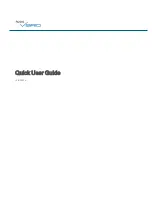
NEXO
A
NALOGUE
PSTD
C
ONTROLLERS
Page
49/82
degradation of output noise. We recommend that the sources and loads you use have the same
desirable characteristics.
It is sometimes claimed that connecting cable shield at both ends creates ground loop, and that the
current flowing in such loop will produce noise. This is not the case for most professional audio
equipment. In short, there are two kinds of loop in which voltages are present: the loop formed by signal
wires, and the looS12 formed by grounded conductors, among which are protective earth conductors
(PE) and signal cable shields.
When a cable shield is grounded at both ends, a loop is closed, and the resulting current causes a
reduction of the voltage induced on signal lines. This effect is what the cable shield is intended to
produce, since this is how it protects your signal from magnetic fields.
If you are using an asymmetrical (unbalanced) source, it is recommended to use a shielded twisted pair
and to connect wire 3 of the cable to the
shield at the source output end (see figure).
This technique prevents noise currents
flowing on the return path of the signal. If
you are using an amplifier with an
asymmetrical (unbalanced) input, it is best to
use a shielded twisted pair, and to connect
wire 3 at the TDcontroller end only, as
shown in Fig. 2. This keep a good
capacitance balance for the signal, however
noise currents flow on the return path of the
signal. (Note that this is only acceptable for a
short cable).
If you are using a symmetrical (balanced)
source or amplifier which is prone to become
noisy when a current of less than 100 mA at
the mains frequency (50 Hz or 60 Hz) is
sourced into pin 1 of its XLR connectors, you might consider opening the ground loop.
8.4 Analogue TDcontroller USER GUIDE
Low Z
1
2
3
Low Z
1
2
3
TDcontroller
Amplifier
Mixing Desk
1
2
3
1
2
3
+
-
+
-
+
-
+
-
Low Z ?
L
o
w Z ?
?
PE
PE
Safety
Ground
SHIELD
SHIELD
0V
IN
OUT
















































